 Weird Stuff
Weird Stuff  Weird Stuff
Weird Stuff  Mysteries
Mysteries 10 Tragic Disappearances and Deaths in Joshua Tree National Park
 History
History 10 Ways Childhood Really Sucked in the Old West
 Music
Music 10 Name Origins of Famous Bands from the 1990s
 Religion
Religion 10 Biggest Turnarounds by the Catholic Church
 Weird Stuff
Weird Stuff 10 Unbelievable Times Laws Had Unintended Consequences
 Humans
Humans Ten Historic Women Who Deserve Way More Credit Than They Got
 Movies and TV
Movies and TV 10 Films That Spawned Major Lawsuits
 History
History Ten Times Towns Were Wiped Off the Face of the Earth
 Creepy
Creepy 10 of the Most Disturbingly Haunted Public Houses in the UK
 Weird Stuff
Weird Stuff 10 Niche Subcultures That Are More Popular Than You Might Think
 Mysteries
Mysteries 10 Tragic Disappearances and Deaths in Joshua Tree National Park
 History
History 10 Ways Childhood Really Sucked in the Old West
Who's Behind Listverse?

Jamie Frater
Head Editor
Jamie founded Listverse due to an insatiable desire to share fascinating, obscure, and bizarre facts. He has been a guest speaker on numerous national radio and television stations and is a five time published author.
More About Us Music
Music 10 Name Origins of Famous Bands from the 1990s
 Religion
Religion 10 Biggest Turnarounds by the Catholic Church
 Weird Stuff
Weird Stuff 10 Unbelievable Times Laws Had Unintended Consequences
 Humans
Humans Ten Historic Women Who Deserve Way More Credit Than They Got
 Movies and TV
Movies and TV 10 Films That Spawned Major Lawsuits
 History
History Ten Times Towns Were Wiped Off the Face of the Earth
 Creepy
Creepy 10 of the Most Disturbingly Haunted Public Houses in the UK
10 Crazy Facts About Camels
No, this list isn’t about cigarettes. We’re talking about camels, the ships of the desert. These iconic, even-toed ungulates are synonymous with hardiness, humps, and horrible B.O. They might be ungainly and ugly, but camels have been helping humans for over 3,000 years, carrying our gear and taking us places no horse could ever go.
10Camel Brigades
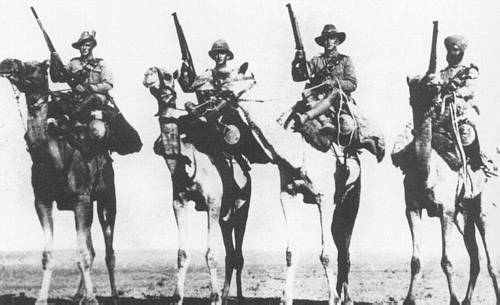
When the ancient world went to war, they always took along a few camels. The Persians, the Seleucids, the Greeks, and the Romans all rode on camels when conquering their foes, but the animals didn’t disappear in the modern age. Camel warfare continued through the 20th century—and they fought in some pretty surprising places.
In March 1855, the US Congress passed the Shield Amendment, a bizarre bill which provided $30,000 for the War Department to buy camels. The idea was to use them in the deserts of the American Southwest. Thirty-three dromedaries, as well as three Arabic and two Turkish trainers, were taken to Camp Verde, Texas, where they surveyed roads and explored the Big Bend. Eventually, they went to Fort Tejon, California, where they carried supplies and military dispatches. They even served as pack animals in the Civil War, and 80 of them were captured by Confederate troops. However, soldiers eventually got sick of the camels’ bad smell and worse tempers, and they were released into the wilderness.
Camels also saw action in World War I. The Imperial Camel Corps, made up of Brits, Australians, and New Zealanders, fought against the Turks in the Sinai desert. However, these “camaliers” didn’t fight from the saddle. Once the beasts were barraked (made to kneel down), one man would care for 16 camels at a time, allowing the other troops to fight on foot. Once the Allies reached the grassier terrain of northern Palestine, horses became more practical, and the majority of the ICC was disbanded in June 1918. But even today, camels are still putting their lives on the line as they help the Bedouin desert forces protect Jordan from smugglers and any other baddies who want to cross the border.
9The Legend Of Red Ghost
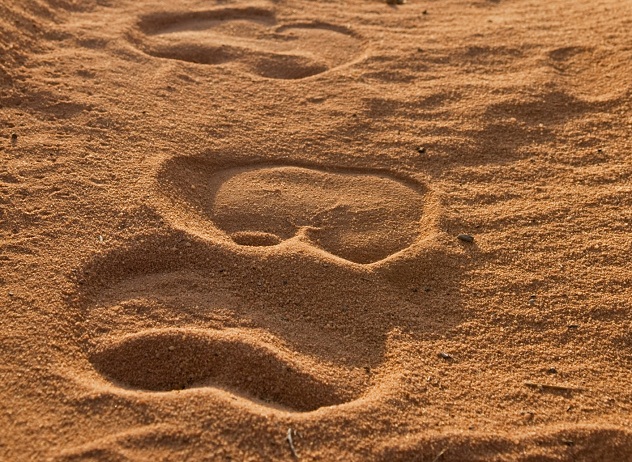
After the US military released its camels, the animals spread across the Southwest, eventually dying out by 1934. However, from time to time, people still claim to see the camels wandering in the distance, and the desert is full of spooky stories of spectral camels like the Red Ghost and his undead rider.
In 1883, an Arizona woman was found stomped to death surrounded by weird hoof prints and strange red fur. Soon after, two miners awoke to find a massive red creature standing in their tent. Several close encounters later, people realized they were dealing with a camel, but there was something unsettling about the beast. People claimed the Red Ghost carried a headless rider. Some speculated he was a young soldier whose comrades had tied him to the dromedary’s back to help him conquer his fear of camels. Unfortunately, the animal galloped away, and the two began haunting the Arizona wastelands (though nobody mentions how he lost his head).
In 1893, the camel was shot by an irate farmer who didn’t care for ghosts lunching in his garden. But when he inspected the corpse, its rider was gone. Perhaps it had fallen off . . . but to this day, people still claim they’ve seen the Red Ghost and the headless camalier, roaming across the Arizona desert.
8The Wild Bactrians
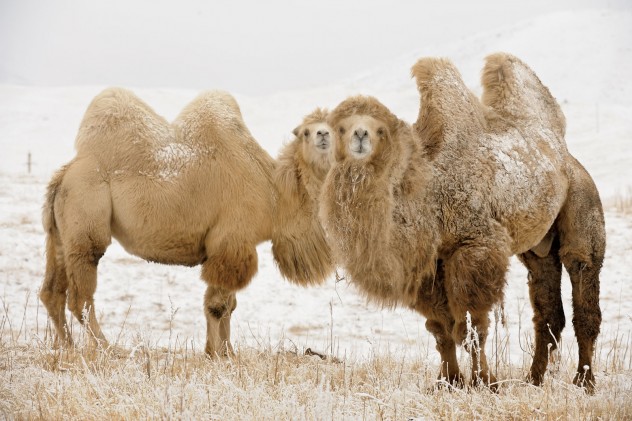
The wild Bactrians of Eastern Asia are the only wild camels in the entire world. Sure, Australia is full of dromedaries, but they’re feral rather than wild, and while there are plenty of domesticated Bactrians, these ones are a separate species that have never been tamed. Wild Bactrians are also among the toughest creatures in existence, perfectly adapted to survive in Mad Max-style post-apocalyptic badlands.
Wild Bactrians only live in two places on the planet. Some are located in Mongolia’s Great Gobi Strictly Protected Area (which, by the way, is strictly protected) while the rest live on the Arjin Shan Lop Nur nature reserve in China’s Xinjiang province. This is pretty impressive considering the Chinese tested their nukes there in the ’50s. It’s basically an irradiated wasteland, but the camels don’t mind. Wild Bactrians also have kidneys that’d make any rock star jealous. There isn’t much fresh water in these regions, so these guys get by slurping from salty springs. That’s right—these camels drink saltwater. Even domesticated Bactrians won’t touch the stuff.
Sadly, wild Bactrians are even more endangered than the giant panda. As of 2010, there were at most 950 left in the wild, largely thanks to nature’s oldest enemy, man. While the Gobi Protected Area is supposed to be human-free, miners ignore the “No Trespassing” signs in their quest for gold, and when they get hungry, they kill a few camels. In Lop Nur, poachers place explosives around salty springs, and when the camels come in for a drink . . . boom goes the dynamite. Drought and wolves are also taking their toll, and scientists estimate the wild Bactrians will disappear in just a few years. Some conservationist groups hope to breed wild Bactrians with domestic ones to save the species, while others want to establish captive breeding programs to keep the bloodlines pure. Hopefully, they’ll find a solution soon, so the wild Bactrian can keep on being the world’s toughest camel.
7The World’s Largest Meal
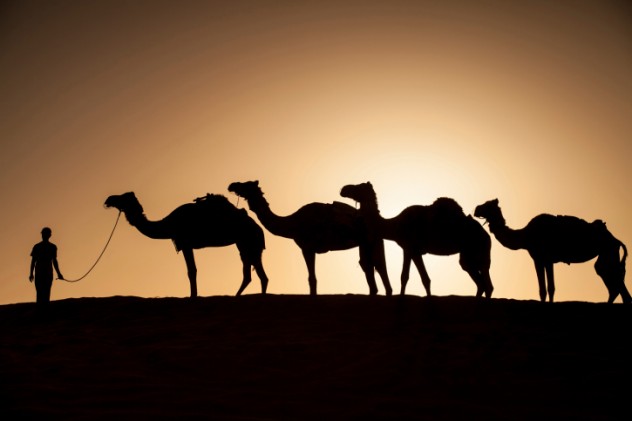
You’re probably fine with eating cows and chickens, but what about camels? The idea probably makes you nauseous, but in the Middle East, camel meat is a delicacy, and the hump is the best part. It’s pretty much 100 percent fat, so it’s nice and tender. However, it’s important to eat your camels young as the old ones are pretty stringy.
You don’t have to travel to the Middle East for a camel snack though. Some British restaurants sell camel burgers, and since Australia is crawling with the critters, there’s quite a market for camel meat. Restaurants serve camel sausage, mince, and steaks to hundreds of hungry Aussies. It’s a win-win situation for everyone (except the camels) as their meat is healthier than beef and fewer camels helps preserve the Australian environment.
Another place you’ll find camel meat is in the Guinness Book of World Records. According to Guinness, the world’s biggest meal (served at Bedouin wedding feasts) involves a roasted camel . . . and that’s just one ingredient. First, cooked eggs are stuffed into fish, and then the fish are stuffed into chickens. The chickens are stuffed into a sheep, and finally the sheep is stuffed into a camel. Voila! The world’s largest meal! Anyone hungry?
6Camel’s Milk
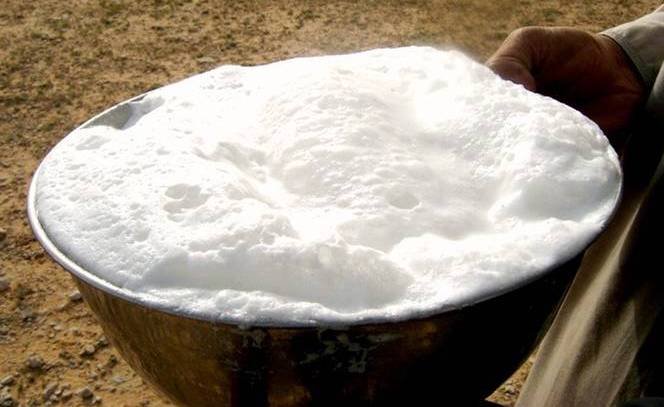
Got camel milk? It might seem gross, but camel milk is amazing stuff. It’s closer to human milk than any other milk in nature, and it has 10 times more iron and three times more vitamin C than cow’s milk. And if you’re lactose intolerant, you can drink it without any problems.
Camel milk is served across the globe, and is enjoyed by the rich and poor alike. The Ritz-Carlton in Abu Dhabi serves creamy camel milkshakes, and this frosty treat is popular with Muslims during Ramadan as it provides plenty of nutrients to help them through their daily fast. Kenyans also appreciate a glass of camel milk, but for them, it’s a matter of survival. East Africa has been struggling with a horrible drought, the worst in six decades, and farmers are exchanging their cattle for camels. They can go long periods of time without water, and they provide sustenance when the cows are all dried up.
Camel milk is also used for medicinal purposes and has been for hundreds of years. In Kazakhstan, camel milk is used to treat tuberculosis, and African doctors use it to provide nutrition to people with HIV/AIDS. According to the Bikaner Diabetes Care and Research Center, camel milk reduces the amount of insulin injections needed by diabetes patients, which is helpful in countries where people can’t afford professional treatment. And some even say camel milk can help the autistic live better lives.
So why hasn’t camel milk hit American shelves? It used to be illegal to sell camel milk in the US, but the FDA finally OK’d the beverage in 2009. However, the government refuses to pay for testing, so it looks like Americans will have to wait a little longer before they can wash down their cookies with creamy, cold camel’s milk.
5The Camel Virus
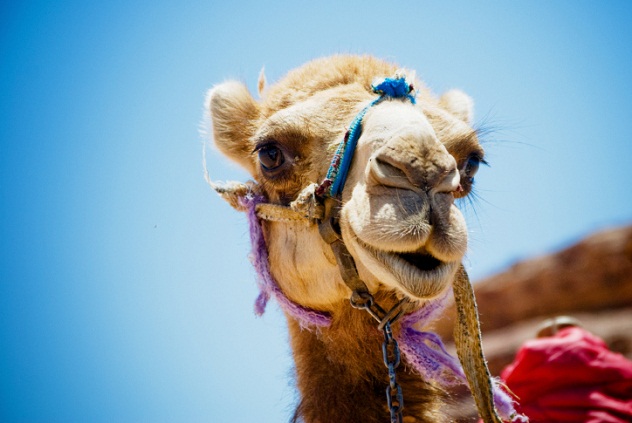
Nobody wants to get sick, but catching a disease from a camel of all things? It doesn’t get much worse than that. In 2012, a virus known as MERS (Middle East Respiratory Syndrome) appeared in Saudi Arabia and has since spread to other Middle Eastern countries like Qatar, Jordan, and the UAE. MERS has even made its way to Europe, infecting people in France, Italy, and the UK. Those unlucky enough to catch this coronavirus develop respiratory illness, which leads to fever, coughing, and difficulty breathing.
At first, scientists weren’t sure how some victims contracted MERS. They knew it was jumping from person to person, but they also found cases where patients hadn’t been near a human carrier, leading them to conclude some unlucky animal was an unwitting host. But which one? Doctors experimented on livestock from various countries, testing them for antibodies. If the scientists discovered antibodies meant to fight “spike,” a protein in the coronavirus, then they’d found the source. It turned out that retired racing camels were the culprits. The camels were infected by bats and then spread the virus to their trainers. While MERS is no Black Death, it’s pretty dangerous. As of October 25, 2013, 62 of the 144 infected had died. Hopefully scientists can develop a cure, or this camel virus might well end up making Captain Trips look like chicken pox.
4The Camel Mobile Library
The area outside of Garissa, Kenya has the sad distinction of the highest illiteracy rate in the nation. While the national illiteracy rate is 31 percent, a depressing 85 percent of north-eastern Kenyans can’t read or write. The people in this region are mostly nomadic and many are destitute, so instead of buying books, they spend their time and money on food and shelter. Of course, without the ability to read, they’re trapped in a vicious cycle of poverty. And that’s where the Camel Mobile Library comes to the rescue.
Formed by the Kenya National Library Service in 1996, the Camel Mobile Library provides books to students and adults in hard-to-reach places. Camels are well suited for the arid landscape, and they can haul quite a few paperbacks. Monday through Thursday, librarians set out with three camels apiece. The first camel hauls two boxes full of books, 200 in each. The second totes a tent, and the third carries anything else the librarian might need. The libraries visit 12 locations (which are always different as their patrons are nomadic), where they find children eagerly waiting to check out new books. The librarians set the books out on mats, and let the children take two apiece. Then they pack their wares and set off the next location, promising to return in two weeks.
For the most part, the adults and children who frequent the Camel Mobile Library aren’t reading for pleasure. Students check out textbooks to study for their exams, and the library specifically provides books to correspond with what the kids are learning in school. They also provide books for adults learning to read and to those living in refugee camps. It’s weird to think that people’s lives are being changed for the better by these slobbery, humpbacked beasts.
3Camel Dung And World War II
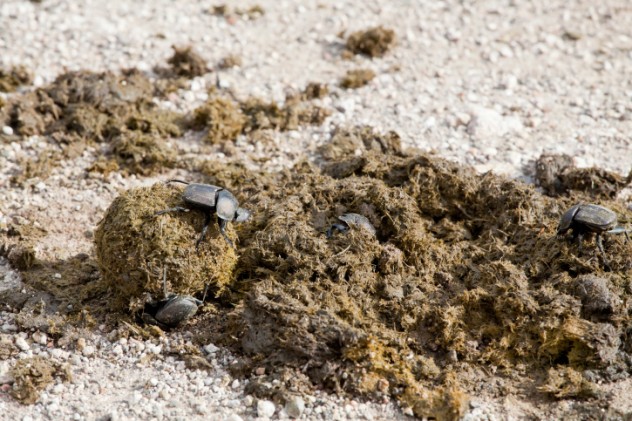
World War II soldiers used a variety of weapons, including machine guns, hand grenades, and . . . camel poo? Surprisingly, camel droppings played a small but important role in the North African Campaign.
For some bizarre reason, German tank operators believed they’d have good luck if they drove over piles of camel poop. Once the Allies learned of this weird Nazi ritual, they started making mines that looked like camel dung. After a couple of panzers exploded, the Nazis figured out what was going on and started only running over dung that had already been plowed over by other vehicles. Once the Allies figured out their new good luck charm, they started building new dung mines—complete with tread marks.
The British also found camel feces useful when it came to camouflage. When they mixed the droppings into their paint, it created the perfect color for disguising their gear. So when they weren’t fighting Nazis, British soldiers spent their time following camels around with bags at the ready.
While it might seem like the camels favored the Allies, they also aided the Axis powers. Dysentery was a major threat on the front lines, but the Nazis learned that local Africans had an effective cure . . . fresh camel droppings. Scientists discovered that the feces were filled with Bacillus subtilis, bacteria which killed the dysentery-causing germs. So since the Nazis didn’t want to number two themselves to death (a horrible way to go), they decided to chow down on “camel apples.” Delicious.
2Camel Wrestling

Let’s shift gears and talk about Tulus, woolly hybrids of the Bactrian and the dromedary. While Tulus might look fuzzy and huggable, they’re actually hardcore athletes who practice the ancient martial art of camel wrestling, and every third Sunday in January, they battle along Turkey’s Aegean cost. The camels are dressed in brightly colored cloths complete with pompons and wooden saddles. In addition to the outfits, they’re given crazy names like Thunderbolt, Black Ali, and Jackal, or even Obama and Rambo.
The day before the match, the Tulus are paraded through the streets, strutting their stuff while music plays. On the day of the fight, the camels are led into an amphitheater where wealthy fans make big bets and spectators buy camel sausages or commemorative shawls. When it’s time to fight, the trainers pull the camels into each other, sparking an all-out war. If a camel falls to the ground, runs from the ring, or screams, he loses and the fight is over. Every camel has its own style. Some attack from the right and some from the left. Some trip their opponents, others use headlocks, and some try to sit on their enemy’s head. However, biting is illegal, and there’s always an umpire to make sure nobody’s cheating. Most fights end with a tie, but when there’s a winner, the owners get a beautiful carpet as a prize.
While exciting, animal blood sports are inherently cruel. The government of Turkey also has problems with the event, although they’re more embarrassed for the nation’s image than the camels’ well-being. But even though the sport’s popularity is waning among the youth, there’s still a loyal fan base, and in the wrestling community, champions (both owners and animals) are superstars on the level of Mike Tyson. Like all animal blood sports, this game has deep roots, and it probably won’t go away anytime soon.
1Camel Beauty Contests
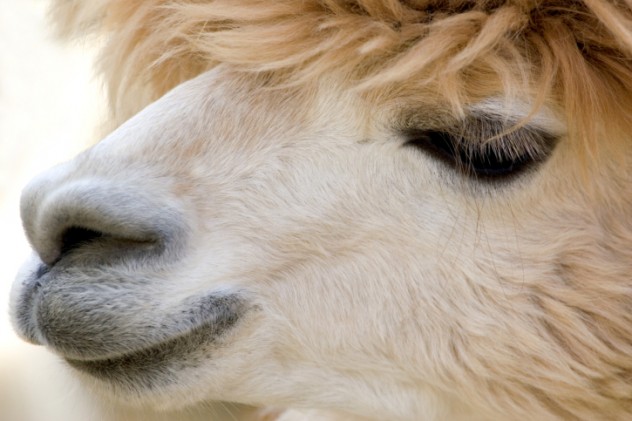
Ask most people to describe a camel, and you might hear “goofy,” “ugly,” or “has a rich tobacco taste,” but you probably won’t hear anyone say “beautiful.” Not unless you’re in the United Arab Emirates that is. Every year, thousands of spectators attend the Al-Dhafra Camel Festival, and the biggest draw is the camel beauty contest. The pageant features over 25,000 camels and attracts kings and sheikhs from across the region. Winners take home brand new Chevy pickups and sell their camels for millions of dollars.
Judges look for specific qualities in prize winning camels. Some of the desirable traits include floppy lips, an elegant hump, nice whiskers, good ears, a proper amount of space between the toes, sturdy legs, a long neck, and a large head (the most important part). If you’re thinking about entering, be sure to keep your camel out of the sun, as the heat will ruin its complexion. Also, you should probably enter a female as they’re considered more attractive. And to make sure everything is above board, you’ll have to swear a religious oath promising to tell the truth about your livestock’s age and lineage.
While the Al-Dhafra Camel Festival might seem a bit strange, it’s very significant to the Bedouin people. Their relationship with camels dates back to ancient times, and these contests also foster tribal pride. Most importantly, these beauty contests preserve the bloodlines of purebred breeds and protect ancient customs from disappearing in the modern age. It’s not exactly Miss Universe, but at least it’s got good intentions.
Nolan Moore once rode a dromedary at the county fair which makes him an expert on all things camel.








